Rewilding the African Scimitar-Horned Oryx
In a historic first, an animal that went extinct in the African wild is reintroduced, giving hope for many endangered species
Imagine the American west without the bison or Australia without kangaroos. That would approach what the African nation of Chad has been like since losing its most iconic animal, the scimitar-horned oryx.
Sometime during the 1980s, the last wild oryx died. It has been 30 years since the animal was last seen in Chad. Working in partnership, the Smithsonian Conservation Biology Institute, the Sahara Conservation Fund and the governments of Abu Dhabi and Chad will release later this summer 25 oryx into the wild. The animals arrived in the country by air transport last month and are now acclimating to the area inside a large holding pen. This will be among the first attempts to restore a large animal to Africa after it had completely disappeared.
Oryx are a species of antelope superbly adapted to living in the dry deserts of Chad and the surrounding Saharan region. They can stay healthy for long periods without water, and their bodies can survive high temperatures that would kill most mammals. Scimitar-horned oryx have survived several million years of droughts and predation.
But while they could outrun the cheetahs and hyenas, they couldn't escape humans armed with modern firearms who could spot them in the wide-open desert and shoot from far away. The hide of the oryx was in high demand among regional nomads. “It's a very tough leather,” says John Newby, CEO of the Sahara Conservation Fund. “Very good for making saddle bags for camels. For making rope, which was used for tying baggage. Making shoes, for example. Making shields during the early 19th century. There was a large trade across the Sahara in oryx for use as raw material.”
Today, cheap Chinese rope and shoes have eliminated the market demand for oryx leather. Leather shields are no longer practical. The threat of commercial poaching seems to have passed.
Fortunately, the species was preserved in captivity. Game ranches in Texas, the royal family of Abu Dhabi and zoos around the world all maintained enough captive oryx to act like a set of lifeboats for the species.
The differing genetic profiles among the various captive populations have allowed a breeding program to be coordinated, which appears to be preventing the danger of a "genetic bottleneck." Reduction of genetic diversity in an endangered species can create a whole new threat to their existence through inbreeding.
“The area where they'll be released is the size of Indiana—70,000 kilometers or so,” says Steve Monfort, director and chief scientist of the Smithsonian Conservation Biology Institute. “It's not fenced. It's not a protected area, its not a national park. It's like Forest Service land or BLM land.”
It is hoped that putting the most important herbivore back into the habitat will help the entire ecosystem to function better. The dorcas gazelle and the endangered dama gazelle are also present in the area in small numbers.
“You would have found them together in grazing habits in the past,” says Monfort. “A little bit like zebras and wildebeests or something. Two species that graze differently but would be found together. …We hope that there will be collateral benefits to dama gazelles.”
The striped hyena is still present in Chad, and scientists expect that it will soon resume it's role as a primary predator of the scimitar-horned oryx. Cheetahs were also a frequent predator of oryx but have been extirpated from the region. Because the people living in the region are primarily keepers of livestock including sheep, cattle and camels, it is unlikely that they would welcome the return of the cheetah.
This type of project is new to Africa, but there is a precedent for it in North America. The long process of restoring Yellowstone National Park in the United States has been a similar experiment. First, bison were restored by supplementing a scant 23 animals with additional bison trucked in from other states. Then elk were protected from hunting and allowed to flourish. Finally, wolves were re-introduced. Something resembling the pre-colonial ecosystem has begun to function in the park.
But one of the challenges that had to be managed in the restoration of Yellowstone was the cooperation of local ranchers who worried about bison and elk competing with their cattle for forage.
The consortia of the Conservation Biology Institute, the Sahara Conservation Fund, the Environment Agency of Abu Dhabi and the government of Chad will face a similar challenge on their way to a goal of a population of at least 500 wild oryx.
“The people who are going to be tracking the animals on the ground once they have been released will be responsible for communicating with the local people,” says Monfort. “Socialize the project to people and communicate about it. A lot of these people weren't even alive when the species went extinct in the early 1980s. To put it simply, without the support of the local people, this project will never succeed.”
“The nomadic population that we're talking to on a constant basis, they're really excited about this,” says Newby. “Because this animal was so present in their lives. It's a really iconic species to them. It's part of their ecology and their habitat. When we started talking about bringing the oryx back, you could see the look of excitement on their faces.”
The Smithsonian Institution has long acted as a catalyst and primary organizer for oryx reintroduction. At the SCBI's breeding facility in Front Royal, Virginia, experiments have been conducted for years that allowed reintroduction efforts to move forward. SCBI used their own captive population of scimitar-horned oryx to test the satellite collars that the released animals in Chad will wear, “to make sure that they didn't change feeding patterns or social interactions," says Monfort. “We documented the whole reproductive biology of oryx, everything from endocrine biology to artificial insemination. These things were worked out here at SCBI.”
Public zoos have often claimed to serve a number of important roles in conservation. But there have been very few examples of zoo-kept animals being successfully released after going extinct in the wild.
Some people hope that even if endangered animals like elephants and white rhinos are all killed in the wild, they can eventually be returned when the political and economic forces that cause poaching are gone. The oryx restoration will be closely watched as a possible template.
“Yes, it's a validation of the contribution of zoos,” says Monfort. “At what point do you say mission accomplished? In most cases, you don't. There's no forever fix for any species. The truth of the matter is that you need insurance populations in zoos. . . if all hell breaks out and a disease knocks out all the animals in [the wild], we've got the Fort Knox of scimitar-horned oryx.”
The Sahara Conservation Fund will provide the expertise on the ground to monitor the oryx. “It's critically important to monitor the population as it is growing,” says Newby. “How are they behaving, how are they moving. Are they dispersing into big groups or small groups?” The relative success of the animals will dictate how many additional oryx are stocked in order to reach the initial goal of five hundred. Eventually, scientists would like to create additional wild populations in other parts of Africa.
“I would say that. . . we can't claim victory at this time,” says Monfort. “We can't say, 'we've got these animals back into Chad and we're done.' Its a continuum. We're 10 steps down the road that's 30 steps long. Conservation is hard.”
/https://tf-cmsv2-smithsonianmag-media.s3.amazonaws.com/accounts/headshot/JacksonLanders.jpg)




/https://tf-cmsv2-smithsonianmag-media.s3.amazonaws.com/filer/bc/84/bc845de5-a5bc-465b-8066-22e0fdfc3bdf/26315119502_1df2f347d2_k.jpg)


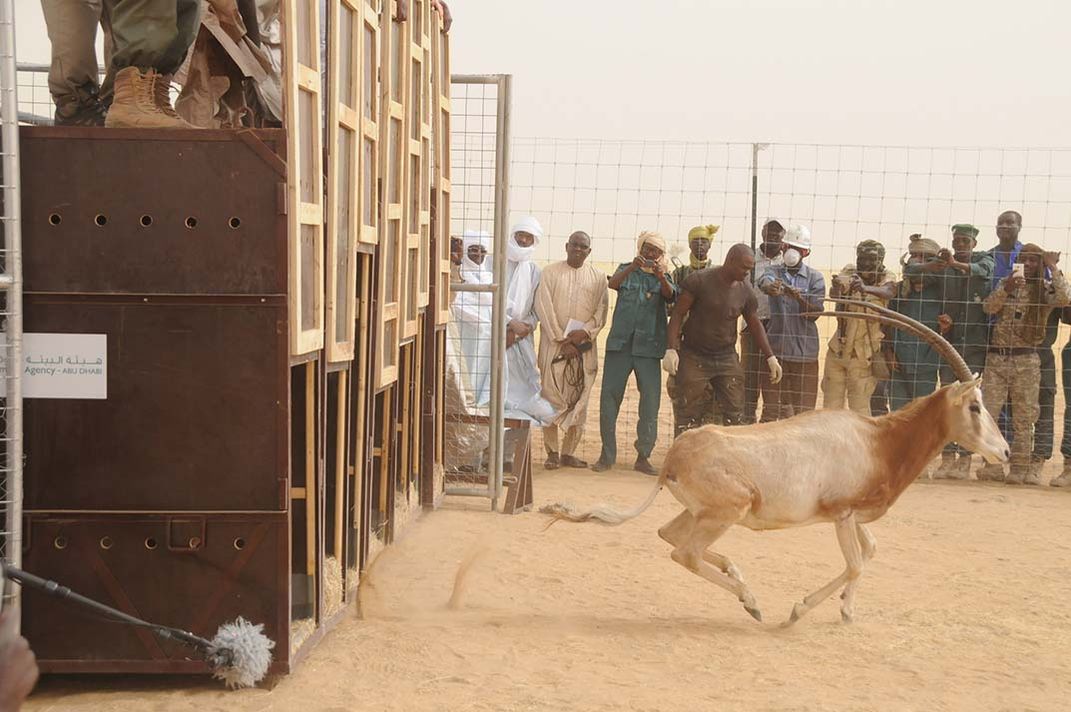
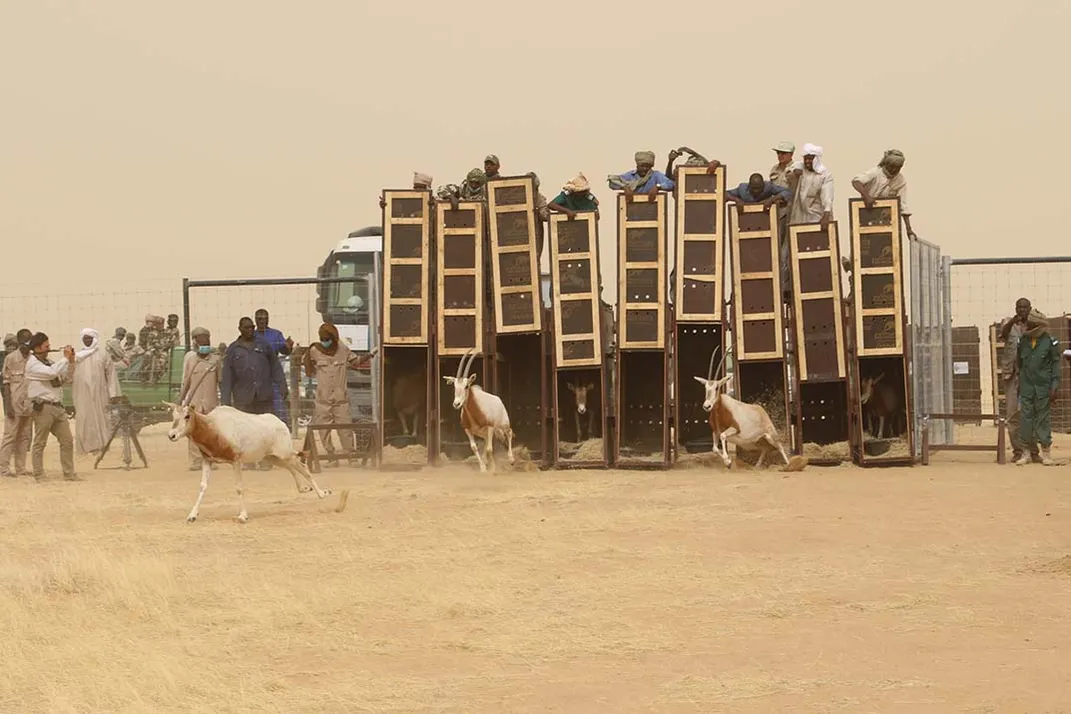
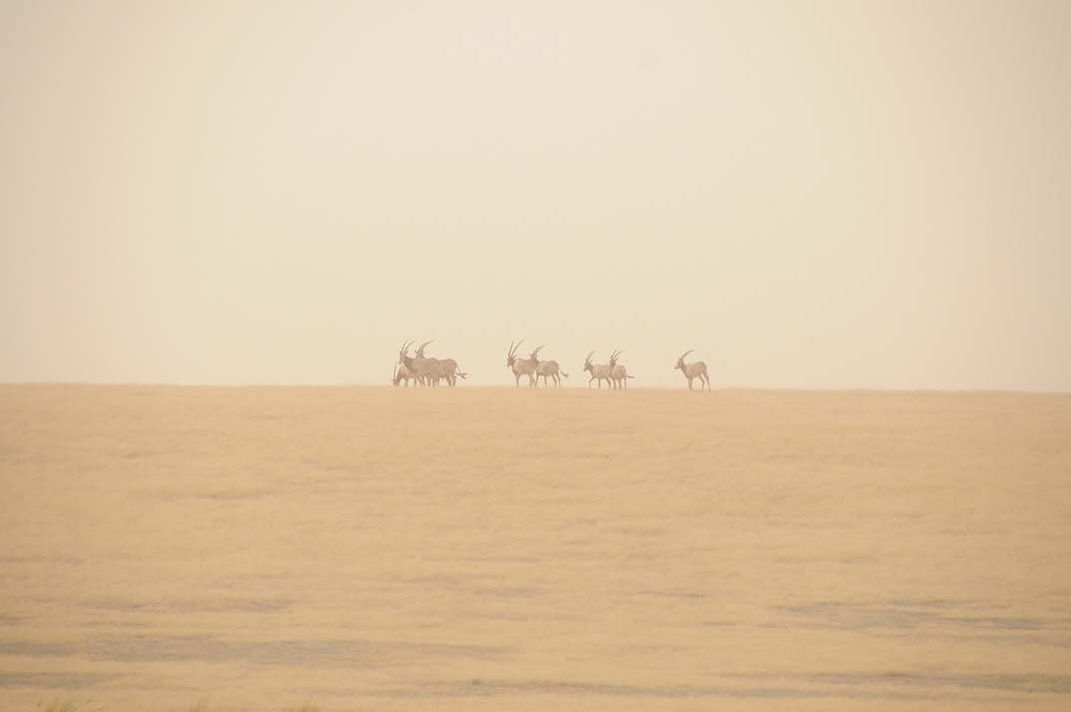
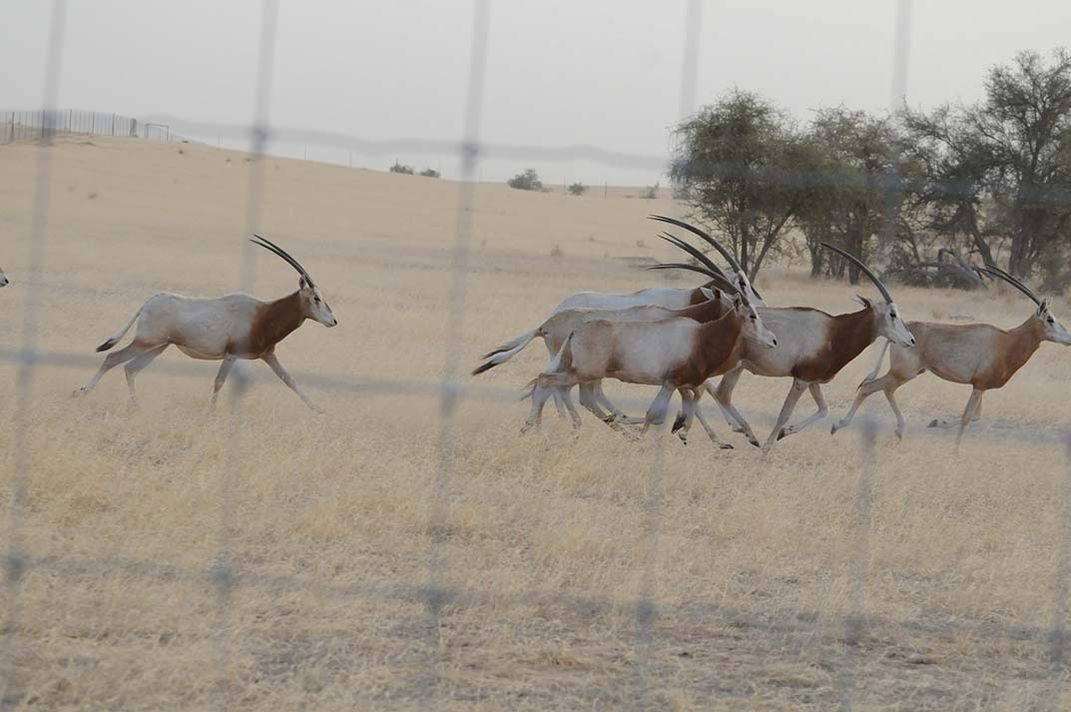
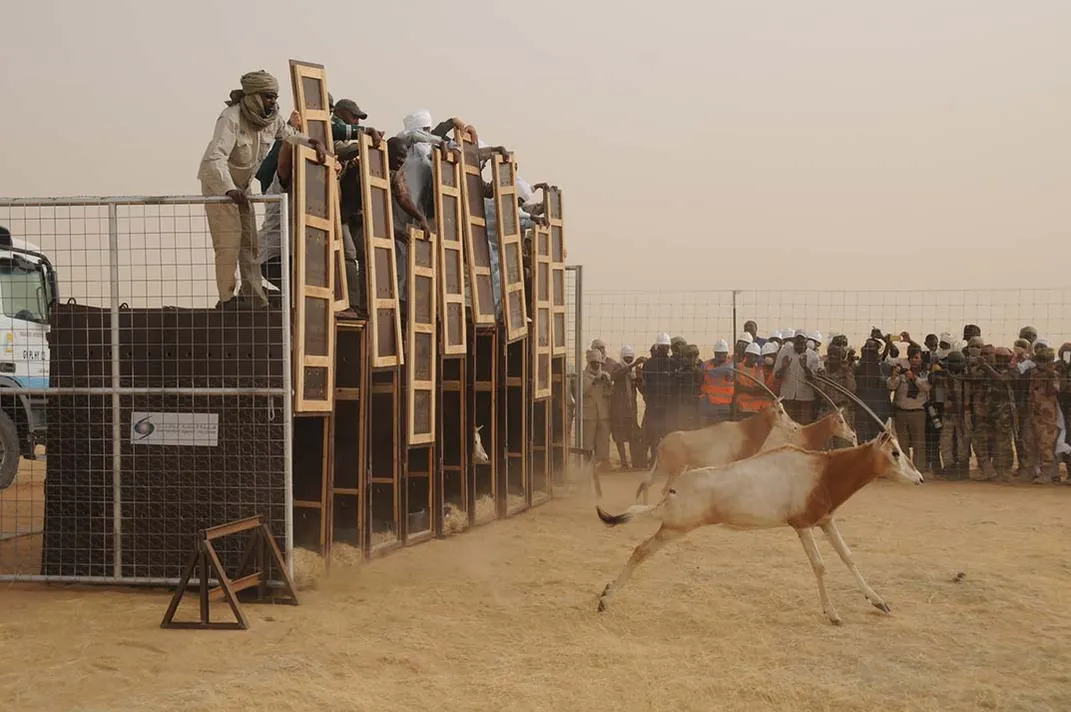
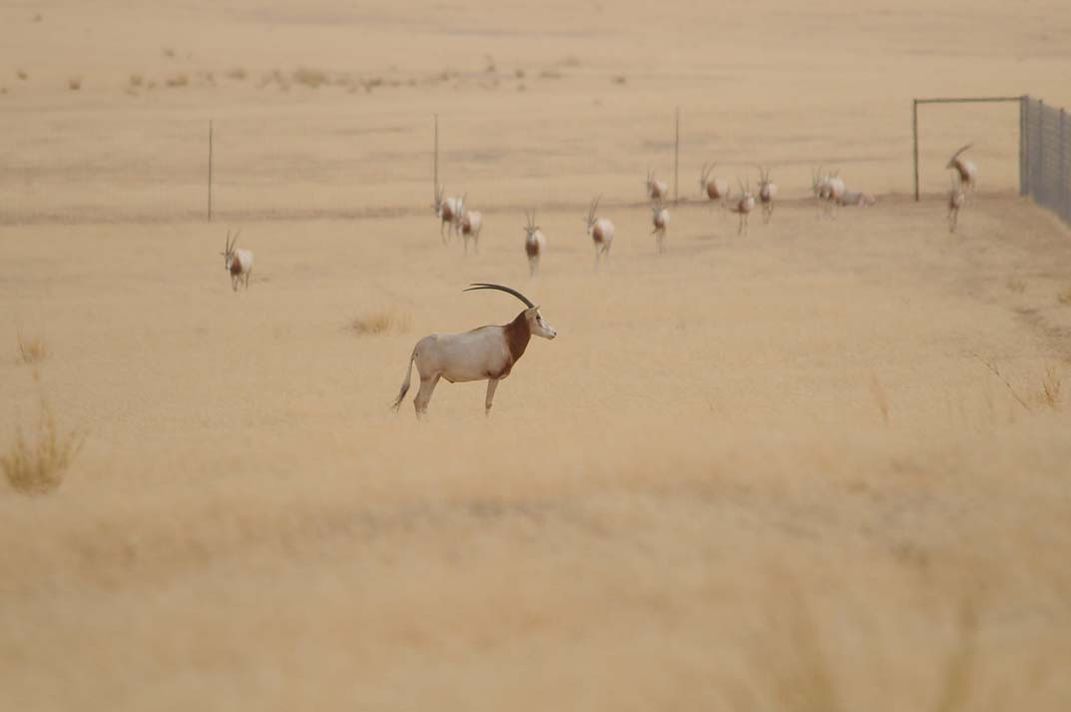
/https://tf-cmsv2-smithsonianmag-media.s3.amazonaws.com/accounts/headshot/JacksonLanders.jpg)